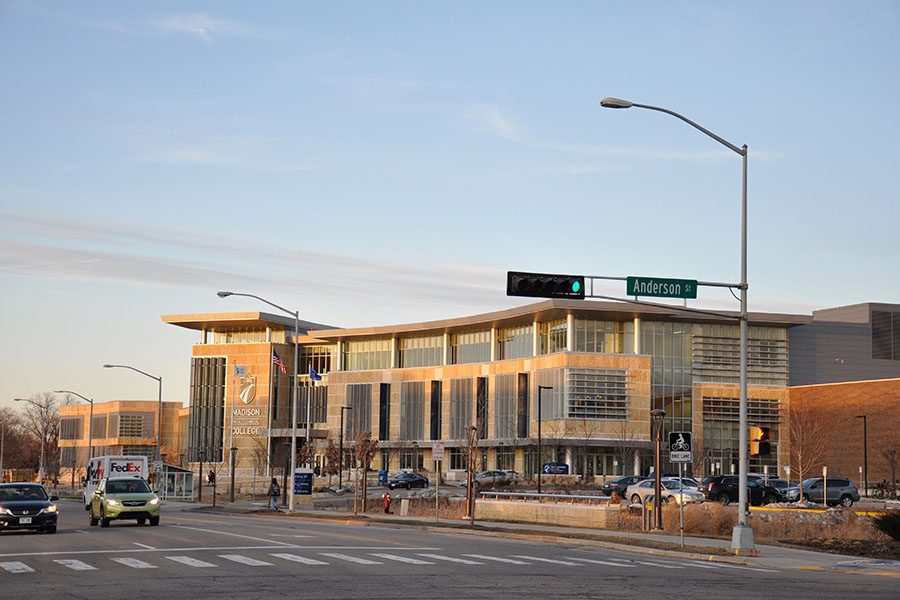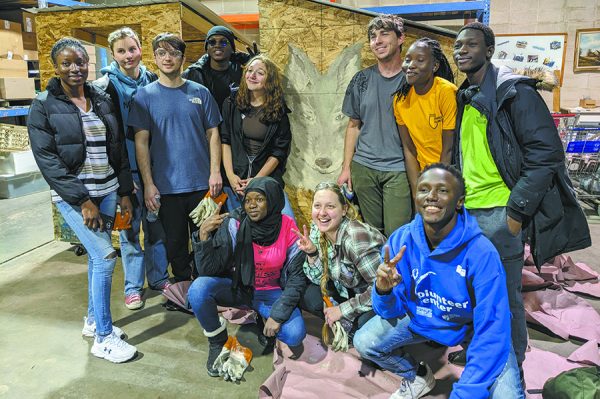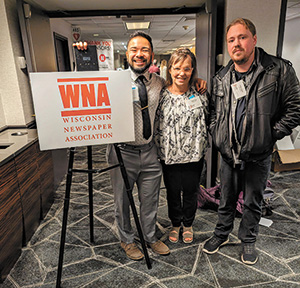What’s in a name? Anderson Street is named for a World War II sergeant
The area in around the largest Madison College campus has some interesting names and lots of history that go along with them
February 15, 2017
As you sit in your idling car outside the college, waiting for the light to change, do you ever wonder where street names come from?
Some names are easy to locate. A street called “Wright” next to an airport is logical. I did not have to look any further than our own Madison College Athletics website to learn that the H. Douglas Redsten Gymnasium was named after former athletic director, basketball coach and golf coach, Douglas Redsten. Norman P. Mitby, for whom the Mitby theater is named, served as District Director and lobbied for the construction of quality athletics and physical education facilities at the Truax campus.
Truax campus sits on land that was formerly part of the Truax Air Force base, originally called the Madison Army Airfield. This base was first activated in June of 1942 during World War II. It was renamed Truax Field after Lieutenant Thomas L. Truax, who died in a flight training in California when his plane crashed into the side of a mountain.
Anderson Street is named for Sergeant Otto Anderson. On June 18, 1942, about six months after the attack on Pearl Harbor, Otto Anderson waited on the Capitol Square for his bus from Madison to Milwaukee. Anderson, who worked for the tool manufacturing company Gisholt doing painting, construction work and other maintenance, was headed to Milwaukee to enlist in the Army Air Force.
Before long, the maintenance man from Wisconsin was stationed at Kualoa Airfield on the coast of Oahu, Hawaii. The airfield was both remote and primitive. Its single, unpaved runaway crossed a road that led to the shore. Cars had to wait whenever an airplane took off. One of the members of Anderson’s new crew at Kualoa was Louis Zamperini, who had been an Olympic distance runner.
In May 1943, Anderson, Zamperini and their crew were ordered by the lieutenant in command to search for a B-24 missing out in the Pacific. The crew took the Green Hornet, a B-24 that was barely airworthy. The plane took off with Zamperini and Anderson aboard. When they reached the search zone, the pilot lowered the plane to 800 feet. Suddenly, one of the left engines failed. An inexperienced crewmember inadvertently stopped the second left engine.
The plane rolled into a spiral, and the nose and the left wing of the plane hit the water at the same time. The plane cartwheeled over the water before it blew up. Everyone on the left side of the plane died.
Zamperini and another crewmember survived 47 days adrift in a raft, until their capture by the Japanese navy. As prisoners of war, they were shuffled from camp to camp, being tortured by sadistic guards. Zamperini survived until the end of the war and returned home to his family in the United States. He later forgave the guard who had tortured him and became a Christian evangelist. The 2014 movie “Unbroken,” based on the biography by Laura Hillenbrand, tells his story.
Otto Anderson’s mother was not as lucky as Zamperini’s family. Two men in uniforms appeared at her Lake Street home to break the bad news – her son was MIA, missing in action. For months, she waited, hopeful that her son was still alive.
He wasn’t. He had never been adrift in the Pacific. He had never spent time in a prisoner of war camp. Anderson had died immediately in the crash. Back in Madison, they named a street after him.










